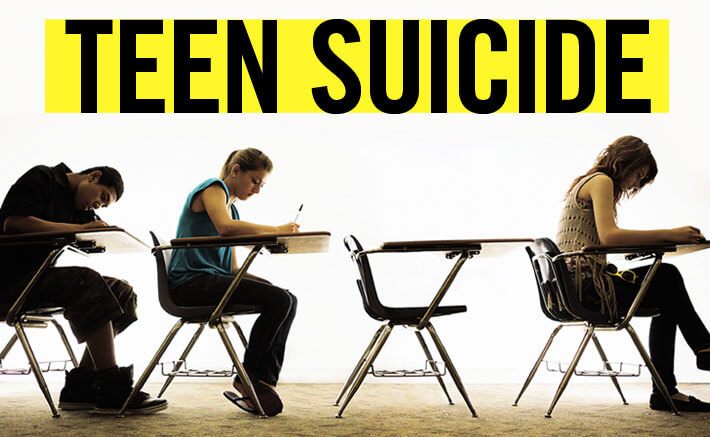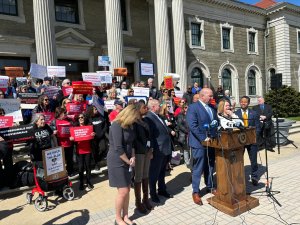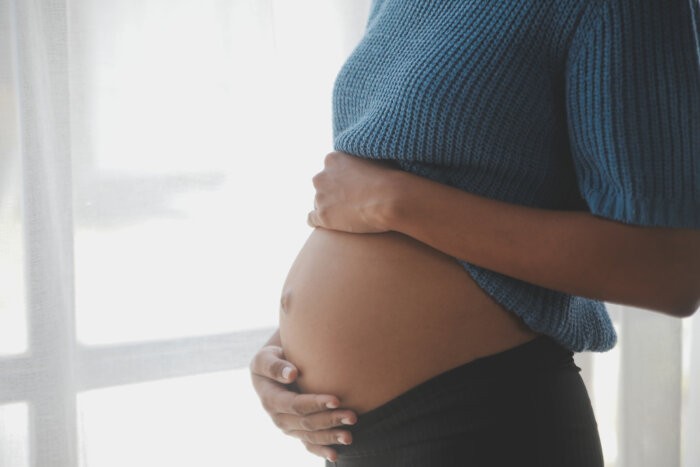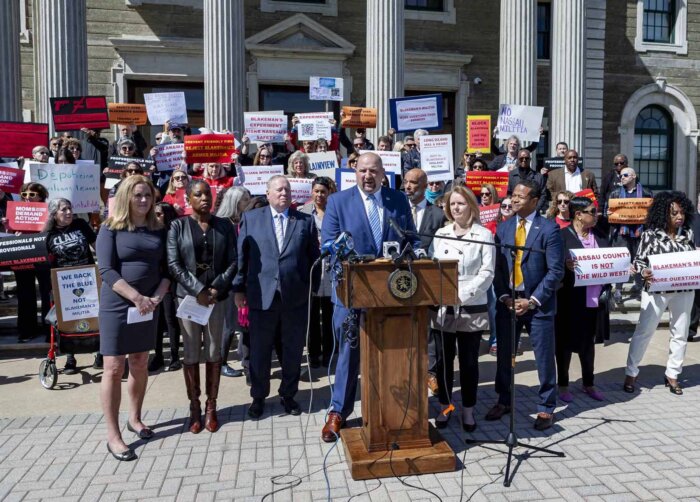
HELP!
Nowhere else on LI do the CDC and DOH’s latest figures seem more apparent than in Hunter’s hometown of Commack. At least four students from her alma mater, Commack High School, have taken their own lives in the past five years, according to school officials—a number some suicide prevention specialists deem unusually high. Adding to the self-inflicted tragedies, at least three times as many former graduates have met untimely fates during that same period—the most recent being Commack High School graduate Gabe Philby, whose mother was arrested and charged with his murder last month.
The suicides and untimely deaths have had a lasting effect on many throughout the community. Instead of remaining silent on the issue, Commack High School alums Victoria Modica and Nicole Blanco wanted to do something about it. They created an online petition urging the district to better educate students and find new ways to deal with the deadly trends.
“It’s time to make a change!” their petition reads. “If someone listens, or stretches out a hand, or whispers a word of encouragement, or attempts to understand a lonely person, extraordinary things begin to happen. BE THE CHANGE YOU WISH TO SEE IN THE WORLD!”
Their message struck a chord. More than 3,000 people signed the petition, ranging from parents and students to concerned well-wishers from out of state.
“Everyone in this community can say that they know someone who passed away from this in the last few years, whether it be a neighbor, cousin, anyone,” says 23-year-old Blanco, sharing her thoughts about suicide with the Press at a Commack Starbucks. “The community needs to come together and understand how these people feel and need to understand how they feel.”
For Blanco, it’s personal. Her cousin Jeremy Twible shot himself days before he turned 17 in July 2009 and her 18-year-old brother Michael took his own life nearly seven months later, she says, adding that she hadn’t seen any of the warning signs beforehand.
Her brother had signed up for the U.S. Marines at 17 and graduated Commack a semester early to serve. While deployed, he was diagnosed with post-traumatic stress disorder. He returned home for the second time after being in the military for one and half years, but his family was unaware that he felt troubled, says Blanco, who went to dinner with him the night before his death.
“They don’t give that information to the friends and family so we didn’t know,” says Blanco.
Two days after returning home, Michael took his own life.
Her cousin Jeremy Twible, a junior at Commack High, also didn’t seem like he was on a suicidal path, she says. Blanco had been with him just days before his death, too.
“He was happy and riding motorcycles,” she says. “You never would have known.”
Blanco is adamant about getting the community to understand the complexity of suicide and its many causes—which she stresses has more to do with mental health than stereotypical vices.
“It is not always drugs,” she says. “It is not always alcohol involved. It is not always being bullied. It is mental illness.” People about to commit suicide aren’t acting rationally, Blanco believes. “They are not thinking about the friends or family they are leaving behind,” she says. “It is not just junkies.”
Her online petition has evolved into a very public discussion and debate about the school district’s approach to handling suicide. Many comments blame the district for the losses. Similar criticisms were echoed by parents at an April suicide prevention presentation at the high school.
Blanco, who graduated Commack High in 2005, remains critical.
“I don’t know if they are afraid to get into the issue of suicide or suicide prevention, but it hasn’t been full-force,” she says. “It hasn’t been, ‘Let’s go and fix this problem.’”
The community has recognized that there is tragedy, but what they need to realize is that Commack has a problem, she adds.
Dr. John Kelly, Commack School District’s school psychologist, views the criticisms aired at the public meeting and the online petition’s website differently.
“Suicide rocks the foundation of any community,” he says. “It scares the heck out of parents and students. People tend to react on those fears and that is where a lot of the negative reaction comes from.
“There was concern on the part of the community not knowing about the efforts that we were engaging in and wanted more to be done,” he adds.
It can’t be said Commack schools haven’t been trying. In fact the district was recognized by New York State in 2003 for its suicide prevention efforts. In addition to the in-class programs, students hold an annual anti-violence presentation and on another date some are invited to participate in a full day aimed at celebrating diversity and the human connection. The school district’s website includes links to an entire landing page of information regarding suicide and drugs and alcohol abuse. It also features links to an Anonymous Alert system, where anyone with a computer can let school officials and local law enforcement know about students who may be in danger.
The district has also brought in suicide prevention specialists to address the student body directly.

For example, Meryl Cassidy—executive director of Response of Suffolk County, a nonprofit that runs a 24/7 crisis intervention and referral hotline (as does the Long Island Crisis Center)—has worked with students there twice so far this year. She’s also been to about 30 other schools throughout Suffolk—about half the county’s total—in that time.
The group initially came to Commack in February to talk about suicide awareness within the health classes, and then again in March following the most recent student suicide. That time around, they presented a series of workshops on grief and were able to reach the entire student body, whereas in the health classes they were limited to mainly 10th graders. There was also the April suicide prevention presentation.
“People in the audience said that they hadn’t done enough prevention,” says AFSP’s Camhi, a panelist. “Some people felt they ought to do it every year for all of the students, so every student learns the warning signs.”
Even so, she adds: “They did have us come in. They at least attempted.”
Commack exemplifies the challenges facing all LI school districts regarding teenage suicide: What’s the perfect solution? How to get the message to stick?
To this end, Commack created a task force—similar to those created to raise awareness about alcohol and drug abuse—to work on creating new suicide prevention programs. It’s open to new approaches, perhaps, similar to those already implemented at a school district 20 miles to the east.



























